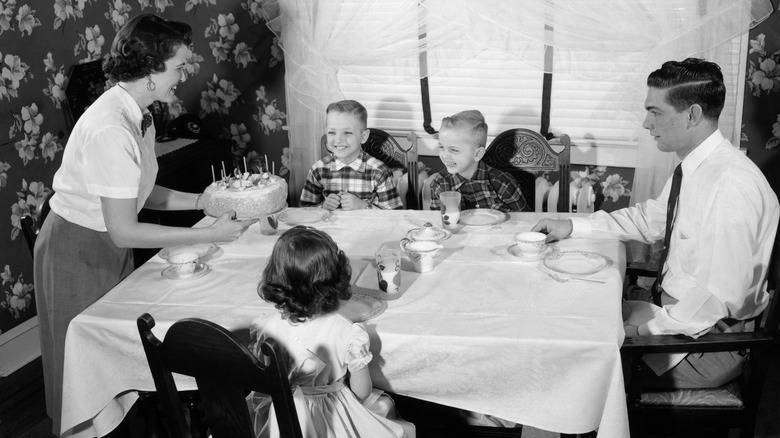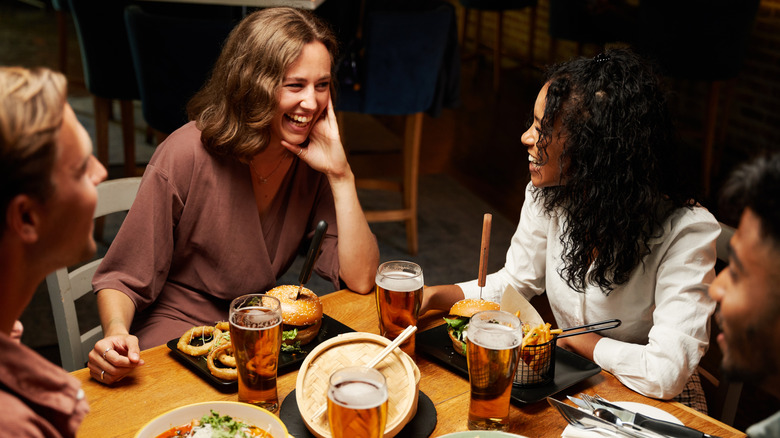The Old-School Dining Rule Your Grandparents Actually Lived By
When it comes to dining behavior, there are definitely some bizarre etiquette rules for fine dining, as well as some archaic ones that should be rewritten. Others are still very valid, even though they've been around a long time, and the world has changed. One old-school dining rule your grandparents lived by was that time-worn phrase, "Keep your elbows off the table." In our much more casual world, does that guidance still apply as proper etiquette? After all, one of the most comfortable ways to scroll through a smartphone is propped up on one's elbows, and that's a problem our grandparents never had.
For some expert insight on this old-school etiquette rule, Food Republic spoke with Nick Leighton, co-host of the podcast "Were You Raised By Wolves?" Leighton weighed in that the medieval origins of the "no elbows on the table rule" were founded in circumstances that aren't a factor today. "Although there are many origin stories, one of the oft-cited stories is that back in medieval Europe, tables were often just wood boards placed on top of trestles," Leighton explained. "So, if you leaned too hard on the edge, the whole thing could easily topple over." Even if a family had a proper table, dining was communal, with many people gathered at once, so space was at a premium. It was also seen as potentially aggressive.
As society progressed and the 19th century rolled around, "table manners started to evolve and there was increased focus on posture being signals of refinement," Leighton detailed. So, the rule of elbows off the table remained in force as a matter of proper comportment. "Today, we obviously have far sturdier tables than they did in the [Middle Ages]. And overall, American dining experiences are far less formal than they once were," Leighton explained.
Elbows off the table still has its place in dining etiquette
While the reasons the rule was originally created are no longer valid, though, it doesn't follow that the "elbows off" guideline no longer has any merit. "[While] elbows on the table are technically [okay] these days, it's still the rule that you shouldn't have elbows on the table when you're actually eating," Nick Leighton explained. "Elbows are reserved for those times when you're between courses."
It's easy to remember when it's okay to place your elbows on a dining surface and when it isn't. The rule of thumb is that if you have utensils in your hands, you should keep your elbows off. If you're not eating or drinking, it's perfectly fine to elbow up and also lean toward your dinner companions, as this is good manners and shows them that you're listening attentively.
Speaking of engaging with your seatmates, Leighton advised that using one's phone at the table is rude behavior. The existence of smartphones doesn't justify their constant presence in a dining setting. "Put your phone away!" the expert declared. "It's always been polite to give your fellow dining companions your full attention."
One other longstanding etiquette rule Leighton said is very much still in force is chewing with one's mouth closed; it's still the right and polite way to chew quietly with your food carefully concealed behind closed lips when dining with others. "This rule transcends the ages, for obvious reasons," Leighton noted.


